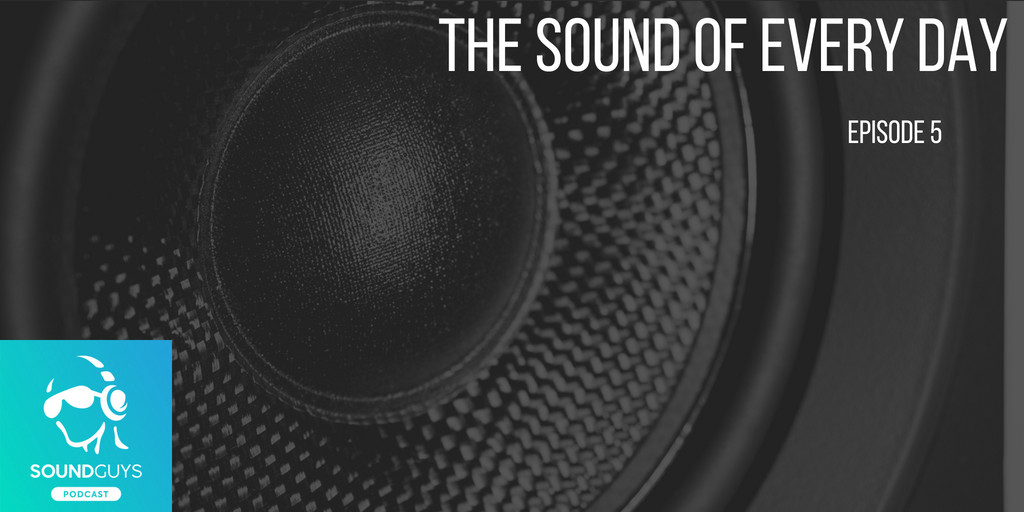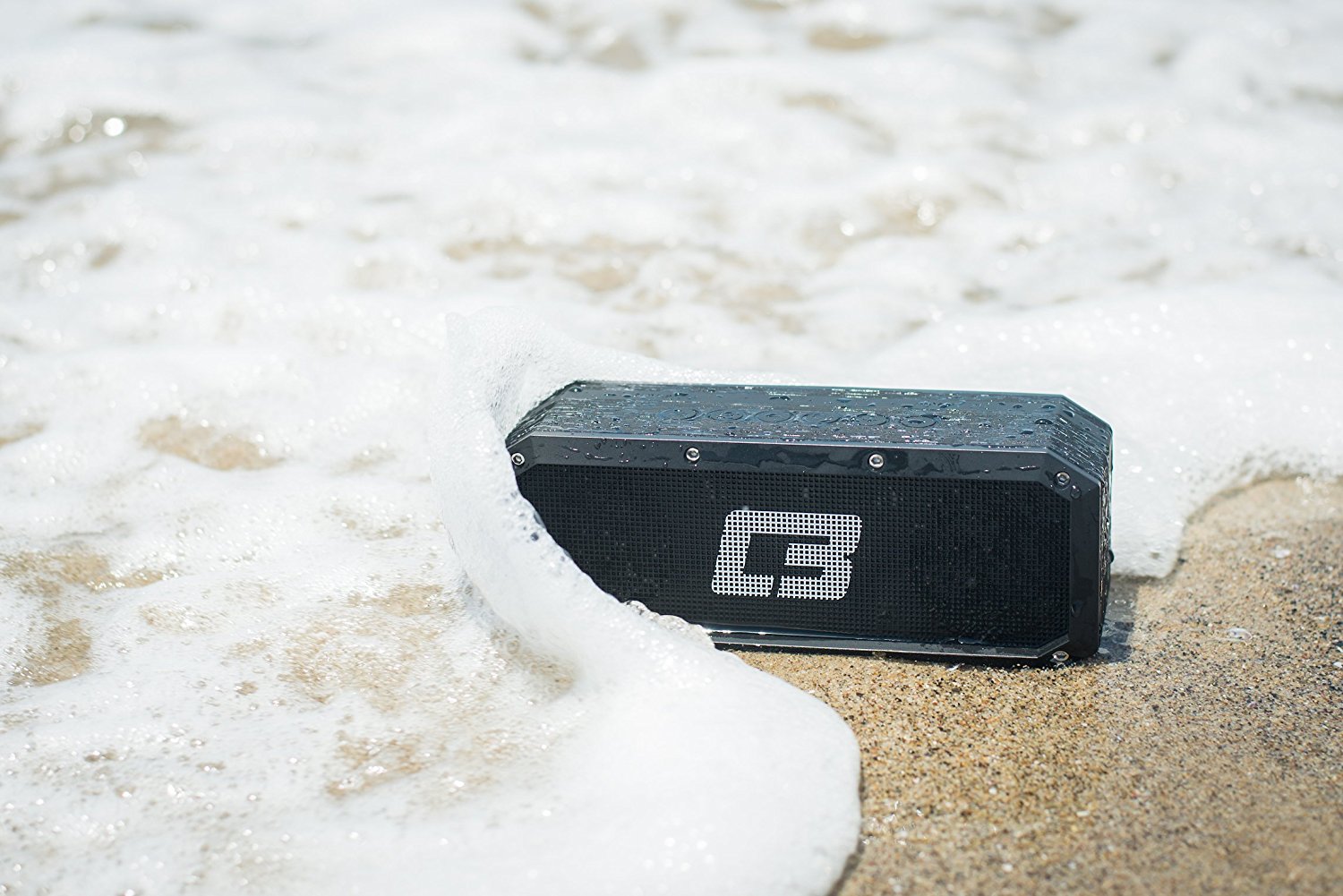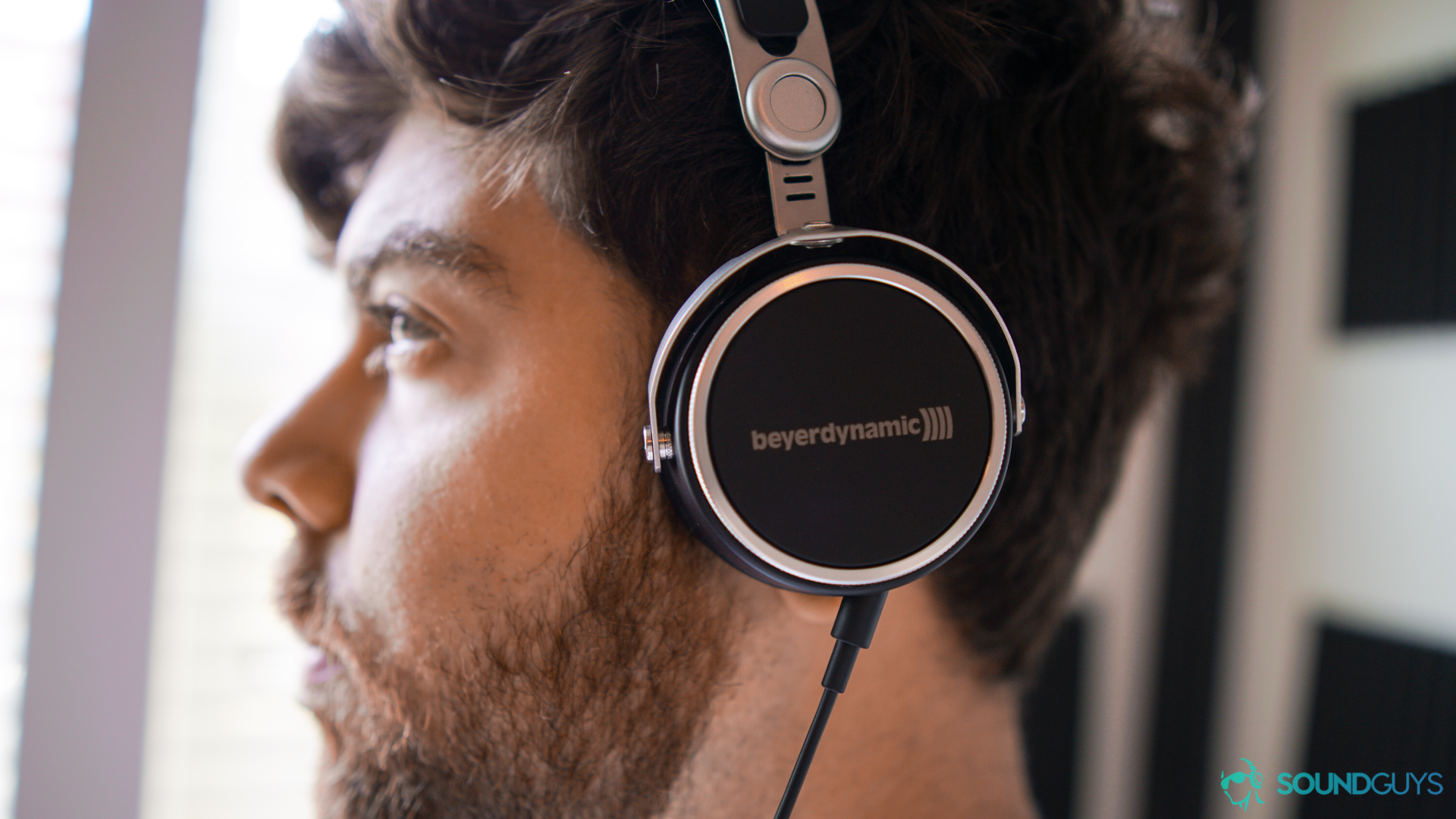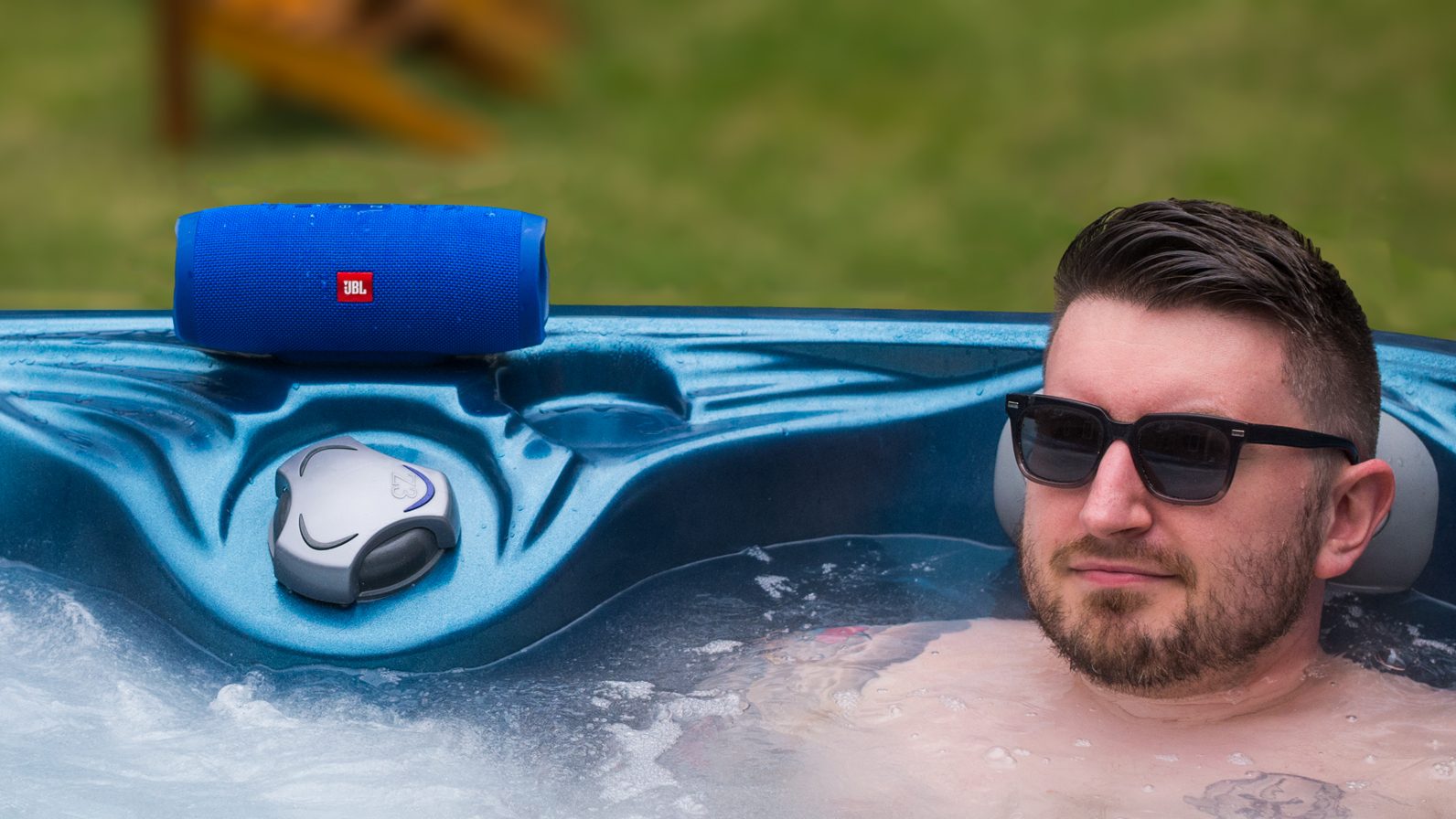All products featured are independently chosen by us. However, SoundGuys may receive a commission on orders placed through its retail links. See our ethics statement.
Podcast: The Sound of Every Day

Check out the SoundGuys Podcast on iTunes! This episode “The Sound of Every Day” can be downloaded here. Below is a full transcript of the podcast. Be sure to subscribe to iTunes for more episodes!
So if you got past the somewhat clickbaity title, we figured this week we’d do something a little more fun than simply nerding out over file formats and the pros and cons of the latest connector. Today we’re going to be exploring uses of sound in your daily lives that you may not have known about. Sound is an extremely useful tool after all.
If we’re going to power through this, I’m going to need a cup of coffee… so I suppose that’s the best place to start.
Coffee roasting
One of my most asked-about hobbies is coffee roasting, because in this day and age- it’s fairly uncommon. Coffee roasting appliances just aren’t a staple of the American and Canadian kitchen in 2018. However, back in the mid to late 1800s, roasting coffee was extremely common. So much so that commercial roasters found it difficult selling pre-roasted beans. Everyone was roasting their own in their ovens at home, and finding the result preferable to mass-produced coffee.
But how does someone even do that, or do it well? Well, the answer is that home roasters use sonic cues to know when the beans are ready to pull out of the roaster, rather than an automated process that can potentially burn or ruin the coffee based on factors outside the roaster’s control.
Sound is a very necessary part of the coffee roasting process. It tells you when you are finished.
When someone wants to roast coffee, they need to bring the internal temperature of the beans up past 385 to 390 degrees in order to dispel the worst bitterness of the beans, and to make a palatable cup of coffee. But you can’t just time that out because beans vary considerably from batch to batch—sometimes you need to roast longer if they’re not dried enough, or shorter if they’re smaller. It’s even more complicated if you want to make a rock-solid cup of espresso. Because you can’t just stick a thermometer in every bean and coffee roasters in the 1800s obviously didn’t use an infrared gun to figure out what’s going on, roasters to this day rely on something else—auditory cues. You have to listen for the beans to loudly pop.
Ever wonder how someone determines what constitutes a “medium” or “dark” roast? It’s not just the color of the beans, they’re actually referring to when the coffee was removed from the heat. For a light roast, you want to cool your coffee beans when they pop. For a medium roast, after they finish popping, and for a dark roast when they pop for a second time.
Personally, I always shoot for a New England roast (a light-medium roast), but that’s just a little hometown pride there.
![Sine Waves[UCONN] How active noise canceling actually works](https://www.soundguys.com/wp-content/uploads/2017/05/Sine-WavesUCONN.jpg)
Roasting coffee (or cahfee if you’re in Boston) is a fairly practical way that people can use sound in their everyday lives. But there are other uses of sound that aren’t so, delicious. Some people use sound for things that are a bit more…experimental. Like levitating objects. You’re lying to yourself if you say you’ve never tried to move something without touching it. Usually people think about psychic abilities Professor X style, but what if you were just going about it the wrong way? What if what you really needed were psychoacoustic abilities?
Using nothing more than sound, researchers have been levitating objects for years. Not large objects like buildings just yet, but small objects roughly the size of golf balls[1]. So how does it work? Well first it’s probably important to remember that sound is just changes in pressure between molecules, hence why no one can hear you scream in space because the molecules necessary for sound to travel are spaced so far apart. But what if you could control those changes in air pressure?
Levitation through sound
Okay, let’s do a mental exercise. Picture a wave in your head. And no, not an ocean wave more like a sine wave on a graph. Going up and down, up and down, up and down. Now on that same mental graph, copy and paste a second wave right on top of it. When two equal waves are added together, it’s called constructive interference and the resulting sound gets louder because there’s double the pressure. Now take one of those waves, and move it slightly to the right so that the high point of one wave matches the low point of the other on the graph. This is called destructive interference, and will result in the pressure between the two waves canceling each other out.[2]
This is actually how active noise canceling headphones work, but we’re not talking about that here. We’re talking levitation. This was just to drive home the point that soundwaves are physical. The pressure changes CAN be felt. Whether it’s by your hand when you put it next to a giant subwoofer so you can feel the air being pushed out of it, or by the tiny, tiny hairs in your cochlea that respond to the smallest pressure changes allowing you to hear. My point is, your body can physically feel it.
So wait, how exactly do you make an object levitate with sound? With ultra-high frequency waves at around 40kHz. If you can reflect sound back and forth fast enough you get something called a standing wave, which, at a certain point, has the ability to keep small objects floating in mid-air. Soundwaves at 40kHz have so much energy that the pressure changes between the waves can physically keep something like sand or styrofoam floating because they’re trapped in the pressure gaps. And because soundwaves at that frequency are so close together, researchers can even move objects in 3D space with a surprising amount of pinpoint accuracy. All you need is a speaker pumping out sound and an acoustic reflector directly across from it. [3] As the sound from the speaker is reflected back across, you can measure where the pressure is going to be. Just find where that is, drop something in there and, voila, magic floating stuff. One step closer to hoverboards.

Cool, so we can get things to float with sound but what else can we do with it? Well, if you try to get your daily serving of fruits and veggies in, you may find it hard to eat an apple, a banana, and handful of blueberries per day… or whatever it is, I mainly survive on almonds anyway. After all, eating takes time and few things are easier than drinking your calories and nutrients. Though we could have an open and endless dialogue about the drawbacks of fruit juice, we realize we’re not the right podcast for that. However, we can talk about the sterilization of fruit juices. That’s right, just as milk must be pasteurized, so too does fruit juice [4].
A study found on the National Center for Biotechnology Information website evaluates the effectiveness of different ultrasound-based sterilization techniques used for processing different fruit and vegetable juices [5]. Researches observed the microbial growth and changes in quality during storage and compared it to that of the more traditional thermal processing approach, AKA pasteurization. OK, cool, so how is this actually done?
Well, researchers found juices subjected to 100W of ultrasound power for 15 minutes at 20Hz was the optimal ultrasound sterilization environment. Ultimately, juices exposed to these sterilization settings showed less microbial growth and improved quality than juices that received a thermal treatment. The ultrasound sterilization technique is great for juice drinkers as it extends the shelf life of a juice while simultaneously resulting in better quality. Looks like a win-win to me.
And speaking of ultrasounds…
While Lily was speaking I had enough time to make a latte or two, so I hand my wife a cup of home-roasted coffee as she heads out the door to use sound at her job. She works in an OB-GYN office, and it’s her job to care for patients who are pregnant. Leaving aside the fact that every motion-sensing door she’ll have to go through on her way to the office is also an ultrasound device, we’re here to talk about sonography in particular.
By now, most of you have probably heard of a sonogram. Those grainy snapshots of the inside of another human being to monitor fetal development in utero. However, ultrasound is one technology that is everywhere when you go to the hospital because it can do a lot of things without damaging soft tissues.
I wish all my problems could be solved by blasting sound at it
By emitting an extremely high-frequency sound with a tiny wavelength, someone with the correct equipment can measure the reflected sound and re-create a rudimentary image in real-time of what’s going on inside someone. These devices have come a long way over the years, and imaging the inside of a uterus isn’t their only application: you can pretty much check on any soft tissue with it. You can check for tendon tears, muscle issues, and when I had a tumor in my biliary tract, it was ultrasound that was used to see if it wasn’t actually gallstones.
But imaging isn’t the only thing ultrasound is good for. Remember when I said that it doesn’t damage soft tissue if used correctly? If you get kidney stones, one of the treatment options is pretty metal: a doctor will adjust the frequency and intensity of the device to break up the stone (or lith) while it’s still inside you.
I wish all my problems could be solved by blasting sound at it… life would be so much simpler.
The mosquito
Well Chris, there actually is a problem you can solve by blasting sound at it. Teenagers. In 2005, Howard Stapleton in South Whales invented something that what we at SG consider amazing and hilarious. He called it the Mosquito. It’s a small box that you can mount on the wall in public spaces in order to deter teens from loitering there. Despite the name, it doesn’t accomplish this by releasing mosquitos. God, what an awful invention that would be. Like a portable pond. Anyway, the Mosquito machine emits a noise that’s so annoying, it will eventually cause teens to not want to hang out there anymore. But why only teens?
Because the sound is so high in frequency (about 17.4kHz) that only youthful ears can hear it. Older people that blasted away part of their hearing with that gosh darn awful darn pop music are immune to it, simply because they can’t hear it. As you age, your ability to hear very high frequencies deteriorates. Just think of those dog whistle apps you can download on your phone. The closer you get to 20kHz the less likely it is that an older person can hear it, though when I tried it my little sister had no problem hearing the high pitched tone. So a sound that might drive a 16-year old up a wall will be inaudible to thirty, forty, or fifty years old.

And if you do still have great hearing, it probably won’t matter anyway since it isn’t painful, only annoying. And you’re unlikely to be loitering in front of stores anyway. Of course, the mosquito has received some pushback because it’s not entirely certain whether this is completely safe or not. But even so, it’s a clever way to make our ears work against us. This is a similar concept to how I deter old people from loitering around my apartment. Heavy metal music. Works every time.
But what if instead of driving teens away, you actually wanted to keep people around for a while…and spend money? That’s right, whether you’re a shopaholic or a penny-pincher like myself., we’ve all stepped foot into at least one retail store at some point. Sure, maybe it was just to find a free restroom—thank you a thousand times over, Barnes and Noble—regardless, we’ve all been there. But have you ever noticed that the shop you’re in is playing background music? You may be more likely to notice when a store lacks a generic soundtrack.
Music moves us
OK so most of us have observed that stores have constant ambient noise, some more intrusive than others, but why? Well, according to a 2016 study published by Elsevier Inc., stores that play music are perceived as having warmer environments than those that don’t [6]. Think about it, you walk into a store and it’s dead silent.You may feel like you’ve intruded or like you’re being keenly watched; however, like going to a friend’s house for a get together, having ambient music relaxes you, even if it goes unnoticed. The same study found that this relaxation and latent atmosphere stimuli yields greater “pleasure, satisfaction, and behavioral intention.” So, not only are we going to have a generally more satisfying experience in shops with background music, but we consumers are more likely to actually purchase something—rather than just window shopping.
OK, OK. So we know that retailers use music to increase potential sales, but does the type of music matter? Well, findings from a separate 2014 study posit that fast-paced music tends to elicit greater feelings of happiness and excitement from shoppers [7]. Anecdotally speaking, my four years of working for GAP and Banana Republic reinforce this idea that storefronts blast the music to 1) draw you in and 2) get you excited to shop. On the contrary, slower music tends to influence us to shop around longer, taking our time. It’s as if our shopping tempo is matching that of whatever music is playing. Generally speaking, upbeat music may serve as a better attention grabber, but slower music results in a better experience for both utilitarian shoppers, like myself, and shopaholics. If it’s a crowded store on, let’s say, Black Friday, fast music will be more effective for hedonic shoppers, while slow music is better at influencing contemplative shoppers.

Now that you know one of many tricks of the trade, maybe you’ll be less likely to succumb to its influence, or maybe you’ll buy that third pair of shoes this week, because, why not – you deserve it and that song is killer.
Obviously, we barely even touched on some of the more interesting uses for sound, as those will end up being their own episodes. You’re not gonna want to miss which tiny animal can literally shatter your bones with sound, or why music mixed in the 2000s probably won’t be collected by enthusiasts in the future.
That’s going to do it for this episode of the SoundGuys Podcast. This was our fifth episode now, and we’d love to hear what you’d like to learn more about! Be sure to leave a review on iTunes, Stitcher or wherever your get your podcasts for more on the world of sound. Want to hit us up directly? You can email us at [email protected] or shout at us on twitter and instagram using the hashtag #soundguyspod.
We’re going to be doing this more often from here on out, so until next time: Happy listening!

Further reading:
[4] WHFoods.org
[5] NCBI
[6] Roschk, Holger & Loureiro, Sandra Maria Correia & Breitsohl, Jan, 2017. “Calibrating 30 Years of Experimental Research: A Meta-Analysis of the Atmospheric Effects of Music, Scent, and Color,” Journal of Retailing, Elsevier, vol. 93(2), pages 228-240.
[7] Yu-ming, Lee and 李宇明. “Choice of Music: The Influences of Music Tempo, Crowding and Shopping Motivation on Consumption Experience Evaluation.” [“餐廳音樂的選擇: 探討音樂節奏、環境擁擠程度與消費動機對於消費經驗評價上的影響”]. 2014. EBSCOhost, www.library.illinois.edu/proxy/go.php?url=https://search.ebscohost.com.proxy2.library.illinois.edu/login.aspx?direct=true&db=edsndl&AN=edsndl.oai.union.ndltd.org.TW.102NSYS5321027&site=eds-live&scope=site